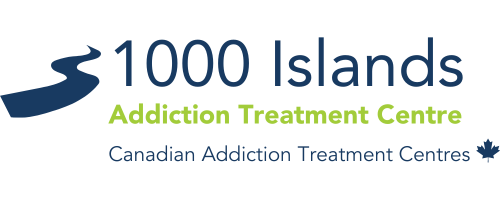
Benefits of Rehab Vs. “Traditional” Addiction Treatment
The societal approach to the treatment of mental illnesses has evolved substantially over the last century or so; addiction treatment in particular bears little resemblance to what it was in the 20th century.
Progress in anything is generally seen as a good thing: it results from having the information to do better. This is certainly true of substance use disorders, where evolution of treatment methods has been directly tied to our growth of knowledge about the condition itself. Few people would argue against the notion that today’s drug and alcohol addicts have higher chances of long-term recovery and better outcomes than their predecessors.
In order to appreciate the benefits of modern-day addiction rehab, it can be helpful to take a look at what addiction treatment used to look like.
A Brief History of Addiction Treatment
Substance use and addiction are not modern afflictions by any means. There is evidence that psychotropic substances were in use as far back as 3000 BC. Indeed, when tourists stumbled upon the mummified remains of the so-called Iceman, who is estimated to have been alive in 3300 BC, they also found fungi with psychedelic properties that he had been carrying with him.
In slightly less ancient times, addiction was not a condition to be treated, but a behaviour to be punished. In the 17th century, Ottoman Empire subjects who were caught smoking were at risk of being beheaded. Punishments were less severe in Russia, which practiced lip-cutting, and Egypt, where offenders would have a tooth extracted.
Things weren’t much better 100 years later, when punishments for addiction included lashes, blood-letting, and cold-water baths. People with addictions were also subjected to hefty doses of guilt and shame.
Stemming The Rise of Alcoholism
Unsurprisingly, the harsh punishments meted out to people who abused substances didn’t do much to stop the rise of addiction. In fact, in the 19th century, alcohol addiction became so prevalent that it was impractical to punish everyone who was caught. Instead, poor people were put into jails and insane asylums, where they were not offered any actual help. Wealthy people were allowed to confine themselves at home; some opted for private treatments that included the administration of substances like morphine and cocaine.
The Introduction of 12-Steps Programs
The 20th century saw the first inklings of the realization that addiction is not as cut-and-dried a choice as people had thought up to that point. It was not something that could be “cured” through punishment or prevented by obedience to a religious god. Two people who couldn’t maintain sobriety in spite of being staunch Christians paired up with two other people: the four individuals joined forces to found Alcoholics Anonymous, a move that would change the landscape of addiction treatment forever.
Alcoholics Anonymous centers around two components: a set of guiding principles, commonly called the 12 Steps, which addicts follow on their path to achieve and maintain sobriety, and group support that allows members to remain anonymous. 12-Steps programs are still used in many addiction treatment programs today, not only for alcohol addiction, but for addiction to almost any substance.
The Era of Modern-Day Rehab
Next to the formation of Alcoholics Anonymous, one of the biggest defining factors in the development of addiction treatment has been the formal recognition of addiction as a disease. Like any other disease, it has biological and environmental risk factors as well as a series of considerations that affect the patient’s long-term prognosis and likelihood of survival.
Rehab centers as we know them today follow the model of addiction as a disease: as a result, treatment is based on what the patient needs rather than what society expects. In other words, people with addictions are not simply locked up in a room to “dry out”; they are offered therapies and programs aimed at addressing the root causes of their issues, and relapses are considered to be part of the recovery journey and not a signal of failure.
Why Is the Modern Rehab Approach Better?
Although much progress has been made in the arena of addiction treatment, we have by no means perfected it. There is still a lot to learn about addiction, what causes it, and how best to treat it. What we do know, however, is that people who go through addiction rehab programs are far less likely to suffer relapses than the people in days gone by who detoxed on their own and then went back out into the world and hoped for the best.
Addiction Is No Longer Considered a Choice
People with addictions used to be vilified for making poor choices and “throwing their lives away”. This attitude implied that all it took to quit was a choice to do so. One of the biggest benefits of modern rehab is that it focuses on more than just sobriety. It also helps individuals look into the reasons they became addicted in the first place. By addressing those root causes, we can help people find healthier ways of coping with them. If someone’s addiction stems from trauma, a rehab program will help them discover what kind of therapy is the best fit for them. If an addiction started with legitimate use of painkillers, one of the goals is to help the person find an alternative way of coping with the pain.
A Holistic Approach to Treatment
Rehab centers do not treat addictions, they treat people – human beings with lives and families, goals and dreams. Treatment programs are not limited to the person with the addiction; they also include families and close friends who have been impacted by the addiction. In some cases, an employer or co-worker may be included so they can help support the individual when they return to work. If the person wants to learn a new skill or aim for a new career, the treatment program will include some life coaching elements that will help them get there.
A Celebration of Uniqueness
Addiction “treatment” in days gone by followed a one-size-fits-all approach. There were no allowances for the differences between people. Today, rehab centers do not only recognize the uniqueness of humans, they value it. No two people follow the same path to addiction, therefore they shouldn’t be expected to recover in the same way. Even the government-funded programs offer some degree of customization to cater for individual needs and circumstances.
Recovery Does Not End at Rehab
A relatively new addition to rehab programs, and one that has been a game-changer for many people, is aftercare. It is dangerous to assume that once you’ve reached the end of a 30-day or 60-day program, you’re “cured” – in fact, the immediate post-rehab period is when you are at your most vulnerable. Making the transition from a protected environment to real life can be daunting, and without supports in place, it’s easy to falter. Addiction aftercare programs are becoming more comprehensive by the day, with many now including access to 24/7 support, connections with therapists and practitioners in the patient’s area, education and information sessions, and periodic appointments at the rehab center to “check in” and monitor progress.
Getting Started with Addiction Treatment
If you or a loved one are in need of help for a substance abuse disorder, you are not alone. Thousand Islands Rehab Centre is a full-service facility that will keep you safe and comfortable during detox, support you through a customized addiction rehab program, and then help you make the transition back to your life when it’s time to go home. We believe that where there is life, there is hope – you can recover, and you can gain the skills and the confidence to lead a happy, productive, addiction-free life. Contact us for more information.





